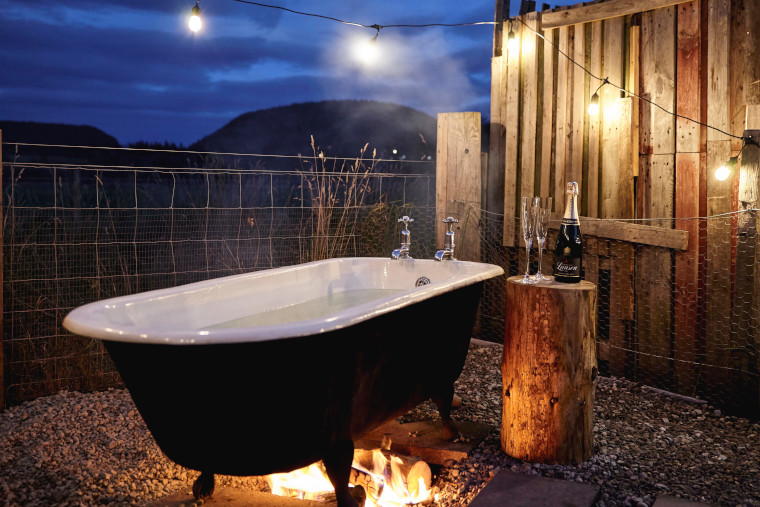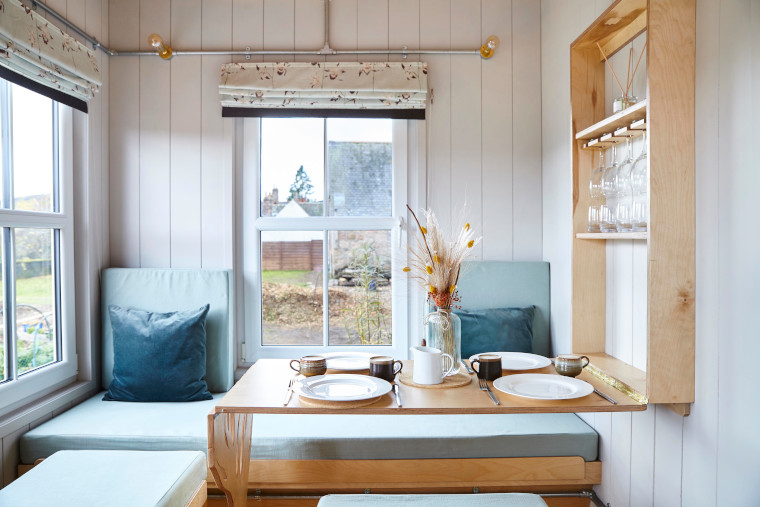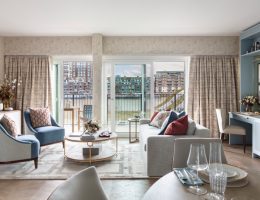Eco-conscious interior designer Alicia Storie created a thoughtful interior for the delightful Tiny House project in the Scottish Highlands
When did you start your business and what made you focus on eco-conscious interior design? After working in an interior design studio in London for many years, I wanted to deepen my understanding of sustainability. I set myself a challenge to find a way to make sustainability a central pillar in the design process.
My journey became centred around researching sustainable interior and architectural methods. I did this through volunteering and attending a series of natural building courses where I learnt to build structures from only sand, straw, soil and water.
With these four simple materials, you can sculpt beautiful organic structures that work in harmony with the surrounding landscape. This led me to set up AdesignStorie in 2020.
I use this learning as a source of inspiration for my projects today, combining it with contemporary design aesthetics.

Can you tell me about some of the ways you try to be more eco-conscious?
Eco-friendly sourcing: Our interior designs combine second-hand and new sustainably sourced materials and furniture to create one-of-a-kind, low impact spaces
We are proud to work with a wide range of brands that prioritise sustainability in their manufacturing and business operations. We prioritise specifying products that are sustainably certified and are designed to support the circular economy.
Timeless design styles: We try to stay away from trends wherever possible and select finishes and furniture styles that will stand the test of time, as well as specifying high-quality materials fit for purpose to maximise the lifespan of the designs we create.
User experience and planning: As early as the concept design stage of a project we design in sustainability. We create efficient multifunctional spaces to maximise practicality and suit evolving needs while minimising materials. Weaving sustainability into every touch point within an interior design.
Upcycling and repurposing: When designing a space we start by identifying the furniture and materials that can be kept as is, restored, repurposed or upcycled to minimise the additional resources required. We collaborate with some incredible small businesses to upcycle and restore furniture for our design projects.
Maintenance and waste management: At the start of a project we offer a service to rehome any furniture or materials that are no longer required to ensure this gets given a second life.
Upon completion of a project we provide a care and maintenance guide for our customers on how best to maintain the finishes and furniture that were specified to maximise the interior’s lifespan.

Let’s talk about your Tiny House project. Where is it and who was the client? The Eco Tiny House is located in Ballater in the idyllic Scottish Highlands. My client is a local joiner who also has a huge passion for sustainability and has a vision of building a collection of quirky tiny eco holiday homes. The first Tiny House is now complete and we are now collaborating on the design of the next one. We work closely to weave sustainability into the interior design and construction.

You sourced everything second-hand. Does that include the bath, kitchen units and shelving? All the interior decor was sourced second-hand from the throws to the can opener in the drawer! Many of the materials used to build the joinery were also reclaimed (the Tiny House was built by Tiny House Builders)
The internal carcasses for the kitchen were second-hand, kitchen units and shelves are made from sustainably sourced wood and yes the outdoor bathtub was salvaged too!
Where do you shop for second hand interior products? From local vintage stores, architectural salvage yards, auction houses and charity shops.

You mention working with a local artist, Holly Foskett-Barnes, what did she contribute to the project? Her illustration references the herbs that can be found in the vegetable garden located directly in front of the tiny house.
Sustainability is woven into every touch point of this tiny house. From the art and books on the shelves to the guest welcome book which is full of local hikes and cycle route suggestions to encourage leaving the car at home.
photography: Megan Redden




Hi Elspeth, What a great article and fab company. It really got me thinking about repurposing clients fabrics. I often suggest using the old curtains for lining for example but theres more to be done there…. thanks!
Hello Kate, good idea with repurposing curtains!